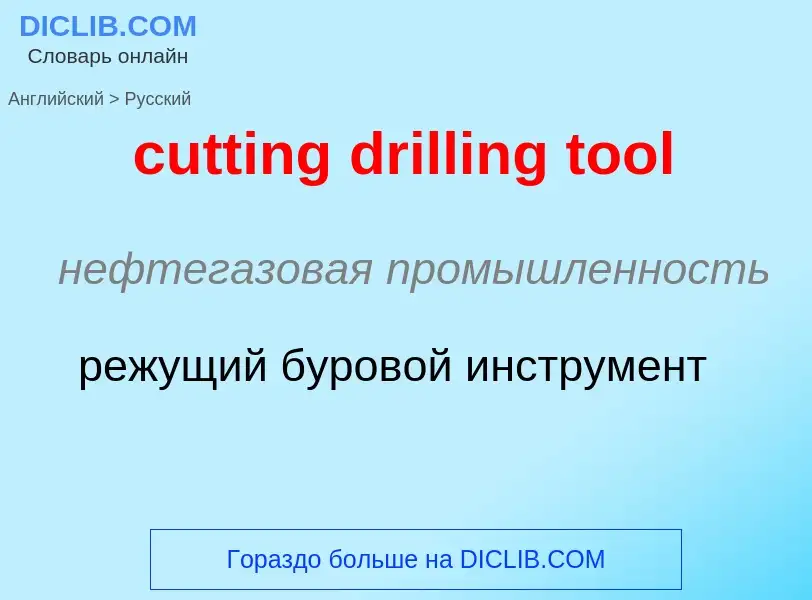Translation and analysis of words by ChatGPT artificial intelligence
On this page you can get a detailed analysis of a word or phrase, produced by the best artificial intelligence technology to date:
- how the word is used
- frequency of use
- it is used more often in oral or written speech
- word translation options
- usage examples (several phrases with translation)
- etymology
cutting drilling tool - translation to russian
нефтегазовая промышленность
режущий буровой инструмент
общая лексика
резец
режущий инструмент
Definition
Tool seemed to make up the theory of lachrymology.
Wikipedia
In the context of machining, a cutting tool or cutter is typically a hardened metal tool that is used to cut, shape, and remove material from a workpiece by means of machining tools as well as abrasive tools by way of shear deformation. The majority of these tools are designed exclusively for metals.
There are several different types of single-edge cutting tools that are made from a variety of hardened metal alloys that are ground to a specific shape in order to perform a specific part of the turning process resulting in a finished machined part. Single-edge cutting tools are used mainly in the turning operations performed by a lathe in which they vary in size as well as alloy composition depending on the size and the type of material being turned. These cutting tools are held stationary by what is known as a tool post, which is what manipulates the tools to cut the material into the desired shape. Single-edge cutting tools are also the means of cutting material performed by shaping machines and planing machines, which remove material by means of one cutting edge.
Milling and drilling tools are often multipoint tools. Drilling is exclusively used to make holes in a workpiece. All drill bits have two cutting edges that are ground into two equally tapered angles which cuts through the material by applying downward rotational force. Endmills or milling bits, which also cut material by rotational force. Although these tools are not made to put holes in a workpiece. They cut by horizontal shear deformation in which the workpiece is brought into the tool as it's rotating. This is known as the tool path which is determined by the axis of the table that is holding the workpiece in place. This table is designed to accept a variety of vises and clamping tools so that it can move into the cutter at various angles and directions while the workpiece remains still. There are several different types of endmills that perform a certain type of milling action.
Grinding stones are tools that contain several different cutting edges which encompasses the entirety of the stone. Unlike metallic cutting tools, these grinding stones never go dull. In fact the formation of cutting edges of metallic cutting tools are achieved by the use of grinding wheels and other hard abrasives. There are several different types of grinding stone wheels that are used to grind several different types of metals. Although these stones are not metal, they need to be harder than the metal that they grind. In contrast to the grinding stone, if the hardness of the metal exceeds that of the stone, the metal will cut the stone. This is not ideal. Each grain of abrasive functions as a microscopic single-point cutting edge (although of high negative rake angle), and shears a tiny chip.
Cutting tool materials must be harder than the material which is to be cut, and the tool must be able to withstand the heat and force generated in the metal-cutting process. Also, the tool must have a specific geometry, with clearance angles designed so that the cutting edge can contact the workpiece without the rest of the tool dragging on the workpiece surface. The angle of the cutting face is also important, as is the flute width, number of flutes or teeth, and margin size. In order to have a long working life, all of the above must be optimized, plus the speeds and feeds at which the tool is run.


